Chronicles of Time Theft: A Fantasy Life Review
Here’s a rewritten version of the provided content:
—

Much-Anticipated Return
 Undoubtedly, Level-5 is among Japan’s most cherished video game companies, having provided fans with nearly unforgettable experiences. Classic examples include Ni No Kuni, Professor Layton, and Yo-Kai Watch, among others, although some struggle for global recognition in Western markets. Despite various challenges, Akihiro Hino’s team is determined to make a strong comeback, evidenced by their latest release, Fantasy Life i: The Girl Who Steals Time. Although the series isn’t among the publisher’s strongest — previously only releasing a 3DS and a mobile game — it has become a cult favorite, with original console copies now costly. Many fans eagerly anticipated the new game, and while I wasn’t as excited, having played the first title piqued my interest.
Undoubtedly, Level-5 is among Japan’s most cherished video game companies, having provided fans with nearly unforgettable experiences. Classic examples include Ni No Kuni, Professor Layton, and Yo-Kai Watch, among others, although some struggle for global recognition in Western markets. Despite various challenges, Akihiro Hino’s team is determined to make a strong comeback, evidenced by their latest release, Fantasy Life i: The Girl Who Steals Time. Although the series isn’t among the publisher’s strongest — previously only releasing a 3DS and a mobile game — it has become a cult favorite, with original console copies now costly. Many fans eagerly anticipated the new game, and while I wasn’t as excited, having played the first title piqued my interest.
What stands out for this release is stepping out of exclusivity, as Nintendo was the prime ally for simpler games. However, aspiring for maximum sales, it also launched on PlayStation, Xbox, and even PC, an unusual but understandable move. By the time you read this, the game will have been market-available for over a week due to review copy distribution issues. Better late than never, we now have it on hand to determine its worthiness for your investment. We’ll be evaluating all customary aspects: story, music, graphics, performance, and gameplay, the latter comprising about 70% of the final score. We’re testing it on a regular Nintendo Switch, as access to its successor console is pending, so we make do.
Given all this, is Fantasy Life i: The Girl Who Steals Time the triumphant return Level-5 needed, or should they have focused efforts on other franchises like Inazuma Eleven? Find out in today’s new Atomix Review. Prepare your maps and tools, as we dive into this captivating world of time travel and fantasy monsters. Caution is advised, as the new installment may appear childlike, but it offers more depth than meets the eye.

Dragons and Time Travel
The story of Fantasy Life i: The Girl Who Steals Time transports you to the world of Reveria, where a group of explorers, including archaeologist Edward, his pet Parakeet, and your character, embark on a life-changing expedition.
They seek a legendary island guided by a luminous dragon fossil that points to the horizon. Eventually discovering an island, they claim it, but things don’t remain simple. Before landing, a purple dragon emerges, threatening the fossil, which unexpectedly revives, resulting in a conflict damaging their ship.
Fortuitously, the fossil dragon demonstrates kindness, allowing your character, Edward, and Parakeet to escape on its back. However, the adversary pursues, leading to an act of bravery as the renowned historian is ejected from the mount, his fate unknown.

Unable to intervene, your avatar and the blue bird enter a portal opened by the dragon’s maw, transporting them to a seemingly familiar yet distinct world. Upon crash landing, they find themselves in a different realm, where locals wear what could be described as “primitive” attire in comparison.
With the dragon wounded, your group must heal it to return and ascertain Edward’s fate. Along the way, characters like Lem and his brother Lanoa, who share a mysterious connection with the world, will aid their journey. Though some allies contribute less than others, they at least explain how the world operates.
In a broader sense, the storyline is rather predictable and not particularly gripping despite its touching elements. It’s not bad, but it doesn’t stand out, with gameplay taking the spotlight for its appeal to users.

Endless Adventures
Fantasy Life i: The Girl Who Steals Time is an action RPG with light elements of life and farming simulation. It’s not for those seeking constant excitement, but rather for gamers looking to unwind for an hour after work.
The game introduces 14 vocations — expanded from the original’s 12 — unlockable through progression, each divided into combat, gathering, and crafting categories, each essential in its own right. Additionally, gameplay revolves around main and side quests, as well as errands, with a hub housing all profession guilds for skill development. Unlike the 3DS version, switching between jobs is now far easier.

Initially, players start as beginners, progressing through tasks to unlock higher ranks. Advancing grants weapon upgrades, skills, and exclusive abilities obtained through varied means. Professions include paladin, mercenary, mage, hunter, and more, each serving a distinct purpose.
While rushing through the main story is possible, the game shines through gradual learning and recruiting allies. Up to three companions can assist, recruited via missions or storyline progression, offering strategic team combinations based on individual strengths.

As the game progresses, leveling up through experience points — gained in battles and guild tasks — enhances abilities, unlocking nodes on a skill tree to strengthen characters across vocations.
The idea is to master as many professions as possible and use those skills efficiently throughout the map. Notably, job changes no longer require visiting guilds, streamlining the experience via a menu option, saving time otherwise spent returning to the main town.

World-Hopping Adventures
Upon completing the initial tutorial, players can explore different maps, transitioning from the guild hub to the fictional Mogollones continent. Each map offers unique gameplay dynamics, with the hub focusing on life simulation akin to Animal Crossing, allowing for customizable constructions.
Teams can clear ancient ruins within the allotted space, with larger ruins requiring more team members. Recruiting allies, whether via side missions or main quests, remains crucial for expanding abilities and potential interactions.

However, ally recruitment is unconventional, as they initially appear as inanimate objects awaiting transformation by magic statuettes, requiring blue flowers collected across the realm.
In turn, this enhances town reputation, affecting in-game stars and rewards. Players can assign homes to allies for combat support, augmented by a robot for faster home customization.

The expansive Mogollones continent emphasizes exploration, leveling up through enemy defeats, treasure hunting, and engaging objectives, reminiscent of games by Ubisoft.
Additionally, some dungeon crawling is available, with sidekick allies recruitable through solved puzzles. Though secondary world NPCs cannot accompany players beyond, their support remains invaluable.
Notably, local and online multiplayer features allow collaborative explorations across platforms, with limitations solely on the host’s earning scale for completed quests.

Gameplay amalgamates various elements, offering diverse yet balanced features, prioritizing experience accumulation and character upgrades for an hour of enthusiastic enjoyment.
Charming Graphics and Varied Music
The game’s graphics capitalize on high-definition visuals, transitioning from 3DS roots to current platforms. Character and environment designs exude personality, enhancing the immersive experience.

Performance varies by console, with PS4, PS5, Xbox Series X/S, and PC delivering a smooth 60 FPS at 4K resolution. Meanwhile, on the Nintendo Switch, visual fidelity suffers slightly, operating at 30 FPS dock or TV mode.
While Switch’s performance may seem lackluster, its portability remains advantageous. A future Switch 2 version promises enhancements, with affordable upgrades for existing owners.
Musical arrangements include nostalgic tracks from the 3DS version with updated performances amidst new compositions, weaving seamlessly into action, emotional, and laid-back scenarios.

Voiceovers are available in English and Japanese, the latter aligning better with the anime aesthetic. Text selection covers various languages, albeit only offering Iberian Spanish, a limitation worth noting.
Level-5 Captures Our Interest Again
To conclude, Fantasy Life i: The Girl Who Steals Time is enchanting for fans of its predecessor, expanding and refining its core elements. While its story isn’t the standout feature, its addictive gameplay hooks JRPG enthusiasts.

For those not patient enough to dive into changing occupations, completing missions, and customizing bases à la Animal Crossing, frustration may ensue. Nonetheless, its specific target audience will likely find it fulfilling.
If you enjoyed the 3DS version, don’t hesitate to purchase it on your system of choice, as you’ll likely appreciate its engaging simplicity. Even newcomers to this RPG genre may find themselves becoming fans.
Through this release, Level-5 showcases its unique charm within the industry, heightening anticipation for upcoming projects. With future contributions from Professor Layton and Inazuma Eleven, it’s an exhilarating time for fans. While waiting, Fantasy Life i: The Girl Who Steals Time offers enjoyable moments.
Remember, the game is available on PS4, PS5, Xbox Series X/S, Nintendo Switch 1/2, and PC.

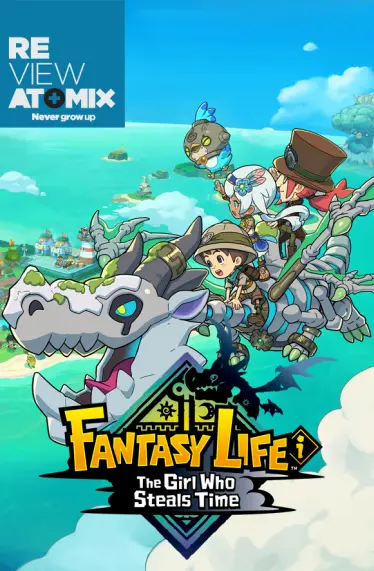




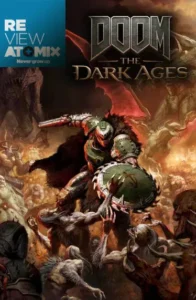


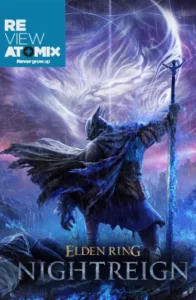

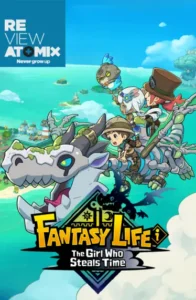


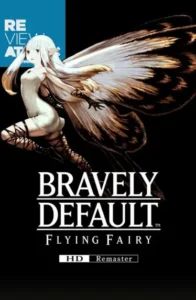
Post Comment